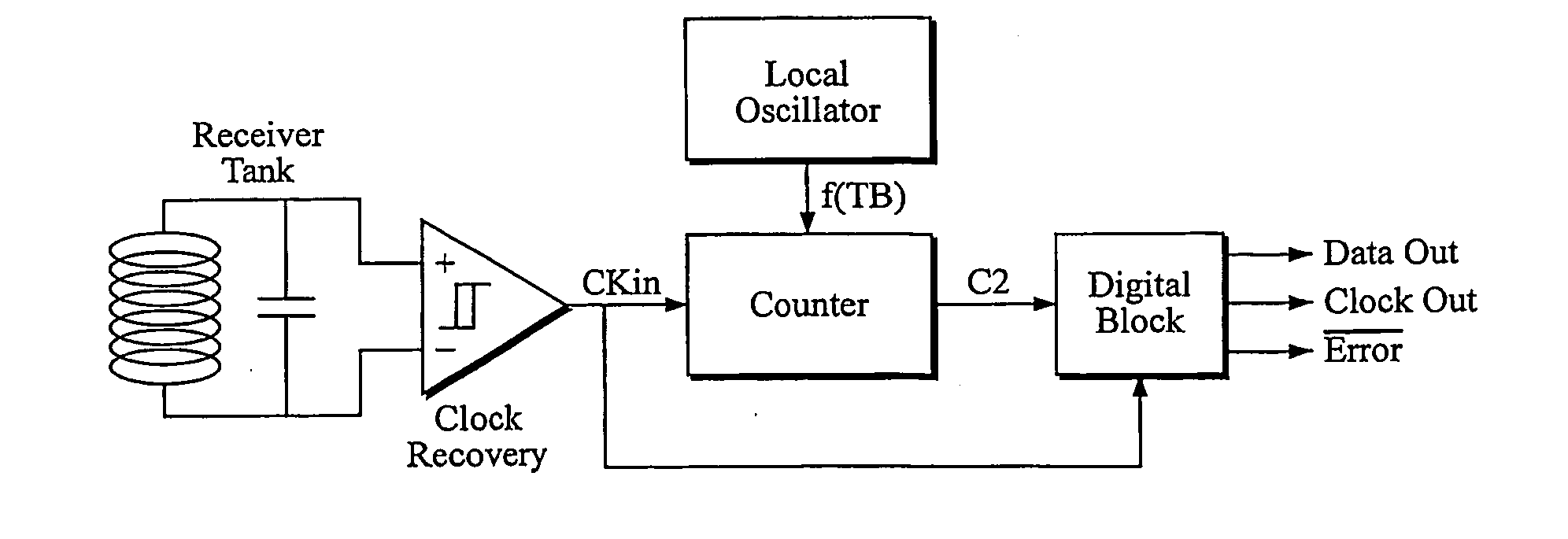Demodulator, Chip And Method For Digital Demodulating An Fsk Signal
a demodulator and signal technology, applied in the field of demodulators, chips and methods for digitally demodulating fsk signals, can solve the problems of large surface area occupied, excessive power dissipation in the tissue, and limited maximum carrier frequency of biomedical implants, etc., to achieve the effect of reducing the amount of surface area occupied
- Summary
- Abstract
- Description
- Claims
- Application Information
AI Technical Summary
Benefits of technology
Problems solved by technology
Method used
Image
Examples
Embodiment Construction
[0068]In general, an improved demodulator, chip and method for digitally demodulating an FSK signal is described herein. In this digital approach, the received FSK carrier is dealt with as a base-band signal. The data detection technique used here for the FSK demodulation is based on digitally measuring the period of each received carrier cycle. If the period is higher than a certain value, a digital “1” bit is detected and otherwise a digital “0” is received.
[0069]As previously described, a simple method for time measurement in an analog circuit is charging a capacitor with a constant current source and monitoring its voltage [9, 10]. However, in a digital circuit one can count a constant frequency clock time-base (fTB) at a rate several times higher than the carrier frequency. Most often this internal clock, which does not need to be synchronized with the carrier, is already available in the system for running other digital circuits or the processor. An n-bit counter runs while th...
PUM
 Login to View More
Login to View More Abstract
Description
Claims
Application Information
 Login to View More
Login to View More - R&D
- Intellectual Property
- Life Sciences
- Materials
- Tech Scout
- Unparalleled Data Quality
- Higher Quality Content
- 60% Fewer Hallucinations
Browse by: Latest US Patents, China's latest patents, Technical Efficacy Thesaurus, Application Domain, Technology Topic, Popular Technical Reports.
© 2025 PatSnap. All rights reserved.Legal|Privacy policy|Modern Slavery Act Transparency Statement|Sitemap|About US| Contact US: help@patsnap.com



